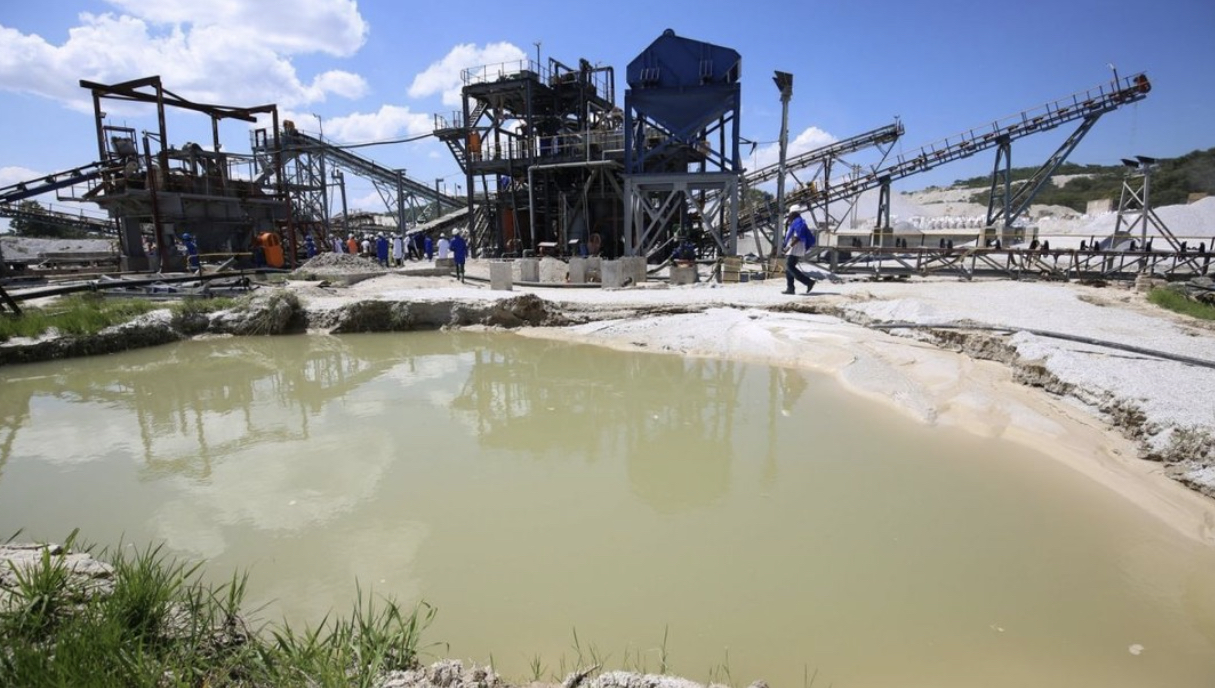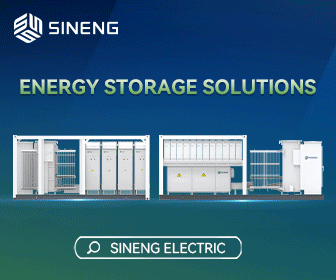Stop Landfilling Batteries: How to build near-zero-waste energy storage
We can’t build a sustainable economy with single-lifespan batteries filling more garbage dumps. Yet today, 19 of every 20 lithium-ion batteries go directly to the trash. There’s no perfect battery, but there is a chasm between different batteries’ waste footprints. We must do better.
As we advance toward a zero-waste, zero-carbon society, it’s time to ask questions about our batteries:
- Why are some batteries landfilled 95 percent of the time, while others are recycled at 99 percent?
- How can we reduce waste toward zero?
- Are we close to viable battery repurposing?
- How can we decrease our dependency on virgin-mined materials, and unethical and fragile supply chains?
- Which battery manufacturing techniques and technologies truly slash waste?
In this first of a two-part series, you’ll discover the answers to these questions, along with battery selection strategies that lower your costs and footprint – and increase your supply chain resiliency and energy independence.
Zero-Waste matters
Batteries are everywhere, powering everything from small appliances and homes, to commercial buildings, EVs (forklifts, short-distance vehicles, cars, and trucks), and entire cities’ power grids. Storage is critical to address renewable energy’s intermittency.
Near-zero-waste batteries start with R&D and environmentally friendlier manufacturing. They “Restart” with fully recyclable products made from previously recycled materials, forming a closed loop that perpetually reduces our waste and protects our natural resources.
But the “green” energy storage market is littered with… well, litter. Whether you’re turning back the dial on climate change, hedging against energy price hikes, or protecting your energy supply chain - battery waste hurts our environment and your bottom line.

Lithium-ion and LFP repurposing:
Repurposing offers a theoretical second life for spent lithium-ion batteries; the concept is compelling, but it’s still being tested in laboratories.
Several factors explain why lithium-ion second-life applications aren't going mainstream anytime soon:
- Lack of infrastructure: There's no universal system for collecting spent lithium-ion batteries, let alone repurposing them. Collection and storage are complicated by fire risks.
- Varying battery chemistries: A wide range of electrode chemistries, formats, sizes, and manufacturing differences complicates repurposing. Moreover, all batteries operate in diverse conditions, and experience variable wear and discharge levels.
- Lack of standards for repurposing: It’s challenging to calculate batteries’ State of Health (SoH) and determine how much capacity remains. This increases the risk for resellers and battery buyers.
- Difficult to assemble battery banks: Companies aren’t sure how batteries will last or perform compared to one another. It’s also burdensome to rehabilitate, test, market, and warranty products and full systems in that scenario.
Research labs, NGOs, and private companies are working hard to overcome hurdles to lithium-ion and LFP repurposing. Effective repurposing will require new collection systems, technologies, business models, and regulations proven in the real world. Without all of those things, spent lithium-based batteries are just waste.
Reducing waste and preserving resources
Recycling has been around for centuries. Experts agree that the Edo Period in Japan (1603-1867) was particularly advanced. Back then, recycling (and repurposing) made the most of the few goods and materials available.
Today, recycling is popular for new reasons: there are more than five times as many humans on Earth (compared to 1867), and we consume far more resources per person. Modern recycling mitigates social and environmental costs (and CO2 emissions). Recycling also ensures we have enough raw materials to continue living abundantly.
 Recycled or landfilled: Where do batteries go when they die?
Recycled or landfilled: Where do batteries go when they die?
The more recyclable a product is, the less waste and virgin mining – and the less waste in the supply chain. While all batteries should be recycled or properly disposed of, some aren’t.
According to the US Environmental Protection Agency’s (EPA) “Advancing Sustainable Materials Management,” lead-acid and AGM batteries are more recycled than aluminum cans (99 percent), most of which (99.3 percent) is recovered in the form of the raw materials needed to build new batteries.
By contrast, only 5 percent of li-ion batteries are partially down-cycled (0 to 60 percent recovery, turned into lower-value materials). Materials for today’s li-ion batteries are almost entirely virgin-mined — this is often a manufacturing requirement. Additionally, that cobalt, copper, lithium, and nickel often come from the DRC, Indonesia, Russia, and other countries with reduced environmental and labor oversight.
Why is there a Battery Recycling Gap?
AGM and flooded lead-acid recycling are automated, simple, and profitable; raw materials are easily extracted and valuable, resold to build new batteries. And nearly 100 percent of AGM and flooded batteries are collected, supported by a national recycling infrastructure, the battery industry, and strong government regulations.
By contrast, lithium-ion and LFP batteries face complex financial, technological, and legislative challenges to recycling. Disassembly requires trained technicians, making widespread recycling cost-prohibitive. Recycling for LI and LFP is often unprofitable (e.g., virgin lithium is 6X cheaper than recycled lithium). There’s no nationwide recycling infrastructure or legislation for LI and LFP batteries. And according to Chemical and Engineering News, “... because researchers have made only modest progress improving recyclability, relatively few Li-ion batteries end up being recycled.” https://cen.acs.org/materials/energy-storage/time-serious-recycling-lithium/97/i28
 Preserving nonrenewable resources
Preserving nonrenewable resources
According to the US Department of Energy, there is "currently a vast recycling supply chain collects, stores, transports, recycles, and re-introduces more than 99% of lead back into the lead-acid battery supply chain."
Unfortunately, battery chemistries that aren’t yet recycled or recyclable will turn into millions of tons of hazardous waste and water pollution, and require unnecessary mining.
Mining only works if there’s something to mine. According to the Union of Concerned Scientists, “In 2019, the global production of cobalt, nickel, and manganese each exceeded 2 percent of today’s total reserves (e.g., a 50-year supply for current reserves and demand) and of lithium and graphite, less than 1 percent.” While new deposits and extraction methods may come, “Reserves that are more difficult to extract, however, could exacerbate the negative impacts of mining.”
Demand for these materials is growing rapidly. By 2030, experts predict there will be 14.5 million EVs, 14.5X more than in 2020. By 2035, most of today’s EV and hybrid batteries are expected to be at end of life.
There's a limited amount of these natural resources. These are supposed to last the rest of human life on Earth – not get single-used to death in our lifetimes. That’s why universal battery recycling is critical.
How to close the Recycling Gap
Recycling creates good jobs, lowers pollution, and reduces virgin mining of conflict minerals. Our industry must push for full recycling of all batteries. That includes designing li-ion batteries for easy recycling; labeling all batteries with their chemical components; and creating a national recycling infrastructure for li-ion and other emerging batteries. Our government, NGOs, and the private sector must invest in R&D and the rollout of promising recycling technologies for lithium-based batteries. And all of us need to push for a ban on battery landfilling. We need to build the foundation for zero-waste now. Because if and when large-scale li-ion recycling is viable, it will still take years to engineer, permit, and build new recycling plants.
What’s next:
Of course, landfilled batteries aren’t the only form of waste. A product’s waste footprint starts upstream. And in Part Two, you’ll discover how material selection, energy usage, manufacturing, and even engineering are all critical to reducing battery waste.
After all, we can’t fix the climate crisis - or ensure long-term energy independence - if our solution starts with virgin mining and ends in a landfill.
 John Connell is Vice President - SLI Products Group at Crown Battery. A single location for engineering and manufacturing gives Crown Battery incredible efficiency and absolute quality control. From this location, we serve global battery markets through a sales force and service network strategically positioned in six continents and more than fifty countries.
John Connell is Vice President - SLI Products Group at Crown Battery. A single location for engineering and manufacturing gives Crown Battery incredible efficiency and absolute quality control. From this location, we serve global battery markets through a sales force and service network strategically positioned in six continents and more than fifty countries.
Crown Battery | www.crownbattery.com
Sources:
- US EPA, “Facts and Figures about Materials, Waste and Recycling” from https://www.epa.gov/facts-and-figures-about-materials-waste-and-recycling
- Chemical & Engineering News, “It's time to get serious about recycling lithium-ion batteries” from https://cen.acs.org/materials/energy-storage/time-serious-recycling-lithium/97/i28
- Union of Concerned Scientists, “EV Battery Recycling” from https://www.ucsusa.org/resources/ev-battery-recycling#read-online-content Crown Battery // www.crownbattery.com
Author: John Connell
Volume: 2023 January/February











